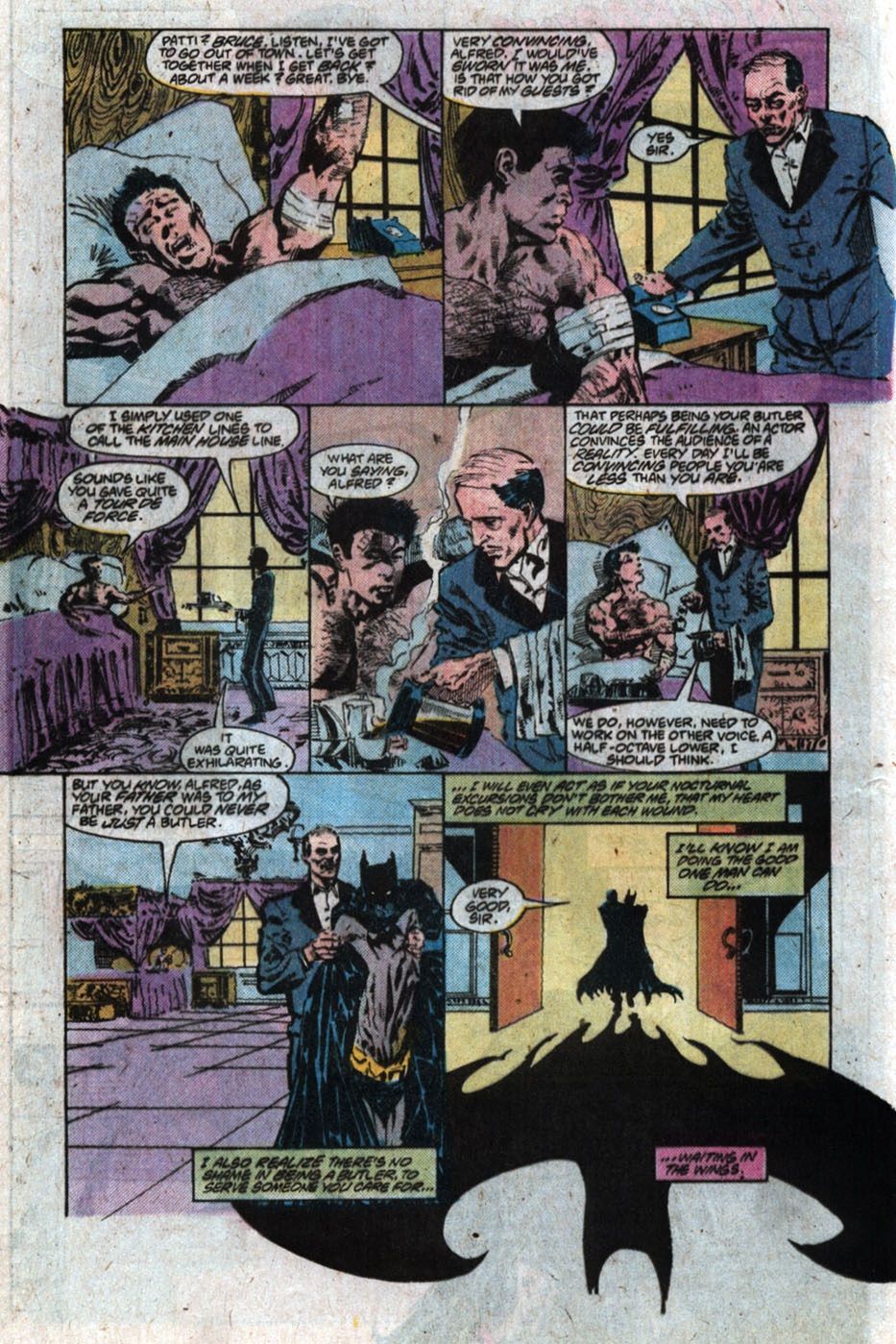
Today, we look back into comic book history to see just how Batman's voice is supposed to sound in the comics, and how that has evolved over the years.
In Comic Book Questions Answered, I answer whatever questions you folks might have about comic books (feel free to e-mail questions to me at brianc@cbr.com).
Reader Bruce P. wrote in a while back to ask, "In your recent column about Nightwing and Azrael, Robin tells Jean-Paul to use that “hoarse, grating voice that Bruce uses”.
I don’t recall Batman’s voice being hoarse and grating before Michael Keaton did it. (Adam West’s voice certainly wasn’t.)
Is this an example of comics adjusting to the movies or was there a mention of it comics before Burton’s Batman?"
I think it is just obvious (and totally natural) that the depiction of Batman's voice in other media is going to impact how we "hear" Batman's voice when we read the comic books, as how could it not? So obviously, the depiction of Batman's voice in the 1989 Batman movie has played a major role on the development of Batman's voice in the comics, but I don't believe it's the literal debut of the idea that Batman's voice is a bit darker in the comics.
Now, obviously, for years, when Batman was depicted in cartoons and, most famously, the 1966 Batman TV series, Batman's voice was treated the same as Bruce Wayne's. Check out this iconic sequence where Adam West literally talks to himself as both Batman and Bruce Wayne. He obviously tries to give each character a slightly different cadence, but for the most part, he keeps the same voice for both Bruce Wayne and for Batman...
And really, the voice he DOES use for Batman is generally how Batman's voice was depicted at the time. A calm, sort of masterful way of talking where you feel at ease when Batman starts talking. This was demonstrated particularly well in 1970's Brave and the Bold #94 (by Bob Haney and Nick Cardy), where Batman is trying to talk to a teenaged bomber to get her to tell him where a bomb is (the girl has just been confronted by her mother, whose neglect for the girl while trying to make a living for the two of them has led to the girl going a bit crazy) and you can see how the voice, described as calm, helps defuse the situation...

However, as the 1970s went on, the darker approach to the Dark Knight led "calm" to become "cold." In the excellent 1980 miniseries, The Untold Legend of Batman, Len Wein tried to put the history of Batman completely into perspective and during that story (which was drawn by John Byrne and then Jim Aparo), he has Batman's voice described as "cold," I believe, for the first time...

That became the standard take on Batman's voice up through Crisis on Infinite Earths and even beyond, he had a "cold" way of talking.
However, after Crisis on Infinite Earths, we got the iconic Batman: Year One, and when Bruce Wayne first goes into action as Batman in Batman #405 (by Frank Miller and David Mazzucchelli), we see that Batman specifically mentions giving the crooks a "growl"...

That, I believe, is the main inspiration for the now iconic introduction of Michael Keaton's Batman in the 1989 film, Batman, with his growly "I'm Batman," thus being the first film or TV Batman to give Batman a distinctive voice from Bruce Wayne...
That same year, in a story set in the time period of Batman: Year by Kevin Dooley and Malcolm Jones III in Batman Annual #13 (so done before the Batman movie), we see that Bruce sets his voice as Batman a half octave lower and Alfred suggests that he goes even further after some friends of Bruce recognize the voice...

But okay, now that Keaton established the growly voice, it is clear that it DID become a whole other thing. As Bruce mentions, when I was doing chat about Knightfall, we get a pretty clear idea throughout the story of the fact that Batman's voice IS actively darker and sort of spookier than normal people because Jean-Paul Valley is expected to try to duplicate it, thus firmly establishing that it IS different and that is specifically "hoarse and grating"...

Of course, very famously, Christian Bale later took over the role of Batman and boy, did he lean into "hoarse and grating" with his version of the Batman voice, although what's interesting, when he first started using "The voice" in Batman Begins, it wasn't too dissimilar from Keaton's take on the voice, but over time, it got hoarser and more grating and, well, you know, it became something that everyone now sort of teases about the Bale Batman movies...
Bale later recalled that his thinking on his Batman voice was that he had to become almost another sort of creature, explaining, ""I got there. They put me in Val Kilmer's suit. It didn't even fit properly, and I stood in it and I went 'I feel like an idiot.' What kind of guy walks around, dressed like a bat? And is then going to go 'Hello, how are you? Just ignore that I'm dressed as a bat.' Of course, he's meant to be doing this. If you look at the history of the guy and the pain that he went through. I went 'I can't do this in a normal voice. I have to become a beast in order to sell this to myself.'"
Silver Nemesis on Batman-Online did a SUPER extensive look at Batman's voice a number of years ago that you should all really read. MANY more examples of Batman's voice over the years in the comics.
Thanks for the question, Bruce!
If anyone else has a comic book related question, just drop me a line at brianc@cbr.com!
0 Comments